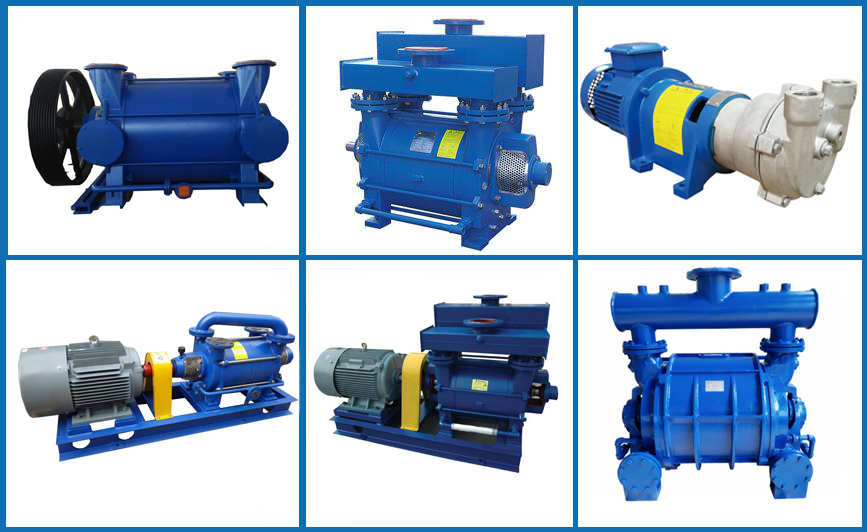vaccum pump for phenolic resin
Phenolic resin is a kind of synthetic plastic, colorless or yellowish brown transparent solid, which is also commonly known as bakelite due to the use of more electrical equipment. It has good heat resistance, fire resistance, water resistance and insulation, good acid resistance, poor alkali resistance, good mechanical and electrical properties, easy to cut, and can be divided into thermosetting plastics and thermoplastic plastics. The modified phenolic resin with different functions can be obtained by adding different components in the synthesis, which has different excellent properties, such as alkali resistance, wear resistance, oil resistance, corrosion resistance, etc.
Due to the different kinds of phenols and aldehydes, catalysts and molar ratio of phenols and aldehydes, various phenolic resins can be produced, including: linear phenolic resin, thermosetting phenolic resin, oil soluble phenolic resin and water-soluble phenolic resin. It is mainly used in the production of plastic powder, laminated plastic, varnish or insulation, corrosion-resistant coating, daily necessities, decorations, sound insulation, heat insulation materials, wood-based panels, casting, refractories, etc. Phenolic resin is used for further processing in many industrial fields. Chemical reactions take place in facilities of different scales, temperatures and pressures. Let’s analyze the advantages of vacuum pump in the production of phenolic resin?
In order to obtain different reaction temperature, vacuum was used to reduce the boiling point of the reaction mixture. Due to the lower boiling point, water can be removed from the reaction mixture during vacuum distillation at a temperature of 40 to 60 ° C.
Due to a large number of products with different process parameters and raw materials, coupled with different reactor sizes, the demand for vacuum varies greatly. In order to deal with the peak consumption, four surge tanks were placed between the reactor and the vacuum system, each with a volume of 43.5 cubic meters. The central vacuum system is used 24 hours a week. The working pressure in the whole system is always between 50 and 60 mbar.
Previously, the vacuum supply was maintained by two oil lubricated vane vacuum pumps, each with a pumping speed of 1000 m3 / h. A Roots vacuum pump with a speed of 2000 m3 / h is also installed upstream of each of these rotary vane vacuum pumps to provide additional power. This pump setting is not satisfactory to ensure trouble free production, because the rotary vane vacuum pump often fails, and the maintenance and repair costs are high. This means that the same third vacuum must always be used and ready to operate as a standby pump station. The reason for the failure is that phenolic and formaldehyde vapors are also inhaled and then condensed in the compression chamber and react with each other. This results in the formation of particles and spots of phenolic resin in the vacuum pump. They can only be washed out and stuck on the compression chamber of the rotary vane vacuum pump through the new oil lubrication part, which eventually leads to shutdown.
In principle, the reaction process inside the vacuum pump is the same as that in the reactor. The problem is also caused by a filter installed downstream of the rotary vane vacuum pump, which is used to extract the oil ejected during lubrication. Because the fluid produced by the bonding of oil with phenol formaldehyde and formaldehyde vapor completely blocks the filter element, it must be replaced in a short time interval of one to two weeks. In principle, the reaction process inside the vacuum pump is the same as that in the reactor. The problem is also caused by a filter installed downstream of the rotary vane vacuum pump, which is used to extract the oil ejected during lubrication. Because the fluid produced by the bonding of oil with phenol formaldehyde and formaldehyde vapor completely blocks the filter element, it must be replaced in a short time interval of one to two weeks. In principle, the reaction process inside the vacuum pump is the same as that in the reactor. The problem is also caused by a filter installed downstream of the rotary vane vacuum pump, which is used to extract the oil ejected during lubrication. Because the fluid produced by the bonding of oil with phenol formaldehyde and formaldehyde vapor completely blocks the filter element, it must be replaced in a short time interval of one to two weeks.
The rotary vane vacuum pump is lubricated with fresh oil, and the roots vacuum pump is replaced by the vacuum system. The new system consists of two screw vacuum pumps, each with a pumping speed of 400 m3 / h and one with a pumping speed of 2000 m3 / h. The control mode of the vacuum system can make the vacuum pump reach the same speed as before. The vacuum pump is larger but the total volume is smaller, thus saving a lot of energy. The connected load of the previous pump station was 41 kW. The new vacuum system only operates at 27.5 kW, reducing the power by more than 30%. The pump station is completely dry running, which means no oil is needed in the compression chamber. As a result, the system is ATEX compliant. The interior is defined as zone 1; no zone is specified for the exterior around the vacuum pump. However, this process is only related to ATEX during the start-up phase, as solvent vapor may be present in the system. In any case, the system will remain inert at startup, and there will be no danger of explosion after that.

vaccum pump for phenolic resin
(The article comes from the Internet. If reprinting is not allowed, please contact our company to delete it.)
